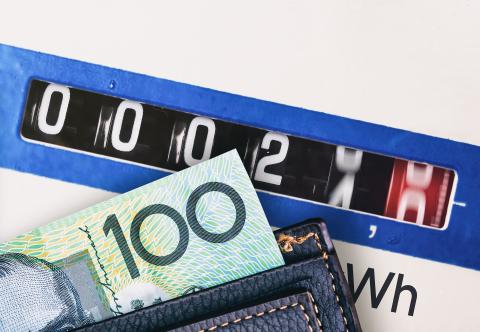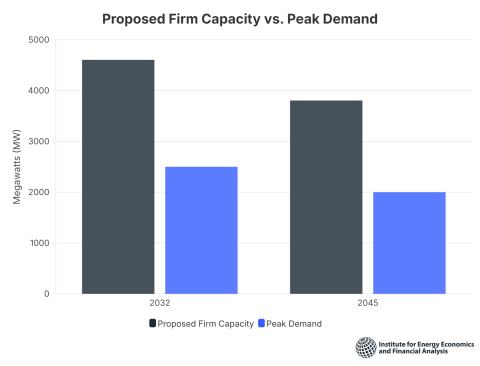IEEFA Update: Red Flags Around ExxonMobil’s Q4 and 2017 Earnings
ExxonMobil’s reporting on Q4 and FY 2017 earnings last week comes in a year when per-barrel oil prices for the company rose by 28%, as financial performance fell short of analysts’ expectations. (While average West Texas Intermediate prices rose 19% in 2017, Exxon’s own “annual realization” around crude-oil data indicate a 28% year-over-year increase. More on that below.)
Without the benefit of recent tax reform, the company’s quarterly earnings would have been nearly flat, and the company would have lost money in its U.S. upstream operations. The company’s stock price dropped by nearly 6% on the earnings announcement. As expected — mostly because of improving oil prices — both revenue and net income improved from 2016, which had been the worst year in recent history for the oil major. Revenues in 2017 of $244 billion were $140 billion below ExxonMobil’s annual average for the past decade.
One way to put these earnings in perspective: Exxon is depending on rising global prices to earn a profit while having increasing difficulty in translating higher oil prices into higher profits. For long-term investors, this was Exxon’s 12th consecutive quarterly loss in its U.S. drilling business. The company also announced significant new investment, largely in the Permian basin.
For the full-year, Exxon reported profits of $19.71 billion, its highest annual earnings since the start of an oil price slide in 2014, when it earned $32.52 billion.
The rising price of oil —rather than increased production —fueled higher earnings in Exxon’s upstream segment, which includes exploration and production of oil and natural gas. Higher prices drove volume down. Upstream earnings in Q4 rose $9 billion from a year ago, despite a production decline of 130,000 barrels. Global production declined everywhere except in the U.S.
The company also reported a $1.3 billion write-down on its natural gas properties, the second year in a row it has acknowledged a long-term low price environment for natural gas.
U.S. federal tax reform accounting changes played a significant role in the company’s earnings, with a $5.9-billion non-cash benefit to earnings, which allowed the company to revalue deferred taxes.
IN THE MEANTIME, RECENT INVESTMENT ACTIVITY SUGGESTS EXXON IS DOUBLING DOWN on fossil fuels. The earnings announcements come on the back of Exxon’s announcement that it would would triple its Permian shale production to 600,000 barrels of oil equivalent per day by 2025, part of a plan to invest $50 billion in the U.S. over the next five years.
The company is planning these investments in roughly equal annual outlays, with $6.6 billion in annual upstream investment and the remainder split 50/50 between downstream and petrochemicals. This would constitute a 62% increase in capital annual investment in U.S. upstream spending versus recent performance. The company has also acknowledged that financial performance for its upstream efforts globally, which constitute 80% of capital spending, has been subpar in recent years. At the prompting of stock analysts, the company has pledged to provide a forward-looking program of remediation that provides a value rationale for its robust pipeline of upstream projects.
In addition to all this, the company has promised shareholders to provide a report on how it is looking at its holdings and future investments as market and policy demands tilt toward a regulatory-driven low carbon future.
| Exxon Mobil Corporation –
Average Realization Data – Crude Oil- $/bbl |
|||
| 2016 | 2017 | % Change | |
| Q1 | 27.11 | 45.93 | |
| Q2 | 37.97 | 43.58 | |
| Q3 | 38.76 | 44.75 | |
| Q4 | 43.38 | 54.12 | |
| Average | 36.81 | 47.10 | 28% |
The company’s end-of-year report will be followed by a 10-K filing later this month and an important investor presentation in March. We hope to see further clarification on the affordability of the company’s dividend payment, an overall capital expenditure plan, some value rationale on the new $50 billion U.S. spending plan, further clarification on the size and value of oil and gas reserves in light of current performance, and a clearly stated pricing outlook and evidence of cost of production savings.
These quantitative measures should come with a core statement on company policy.
Is ExxonMobil going to continue an aggressive, robust, global investment strategy that aims for greater levels of oil and gas investments? Is the company concentrating on short-cycle outlays driven by annual cash concerns? Should shareholders continue to accept Exxon’s argument that its success is about industry leadership, or should shareholders look instead to more traditional measures of performance?
Tom Sanzillo is IEEFA’s director of finance. Kathy Hipple is an IEEFA guest columnist and finance professor at Bard College’s MBA program in sustainability.
RELATED POSTS:
IEEFA Update: Climate Risk, the Oil Industry, ExxonMobil, Rex Tillerson …
IEEFA Update: Shareholder Vote on Exxon Mobil’s Climate-Risk Transparency Suggests a Larger Opening
Changing Energy Markets Mean Trouble for ExxonMobil Finances















